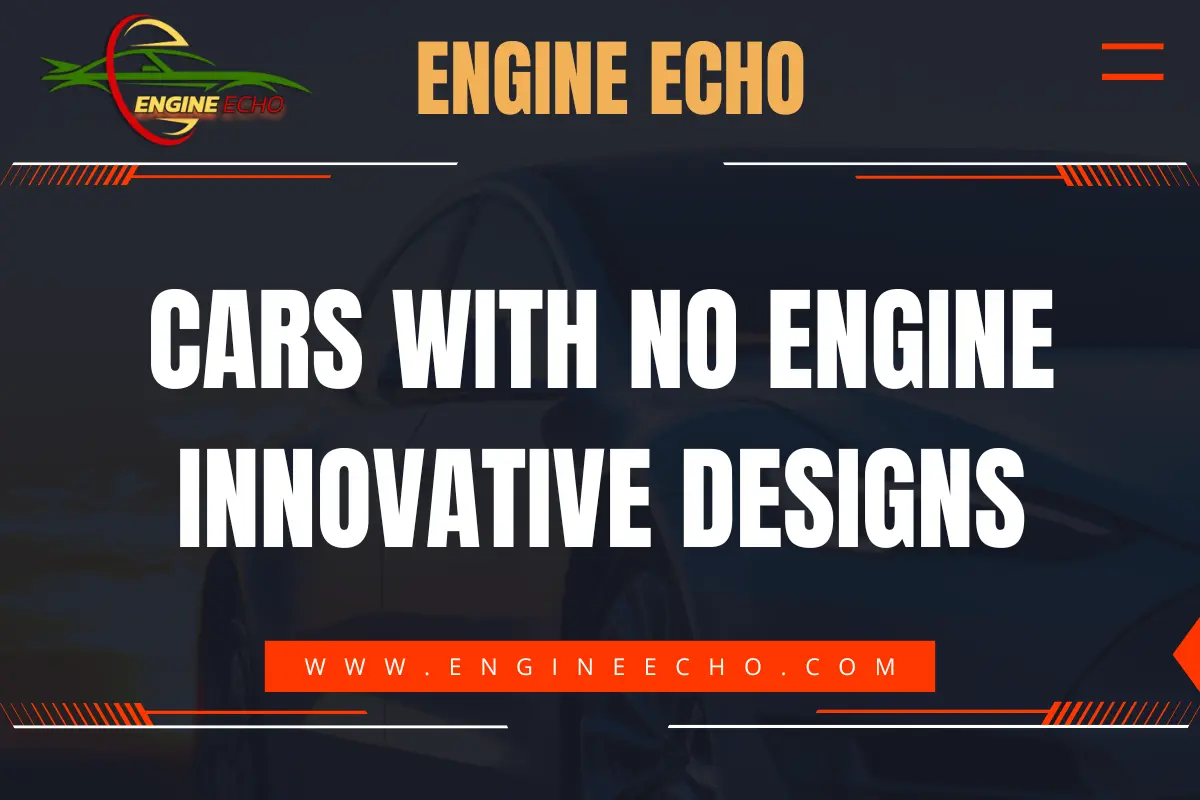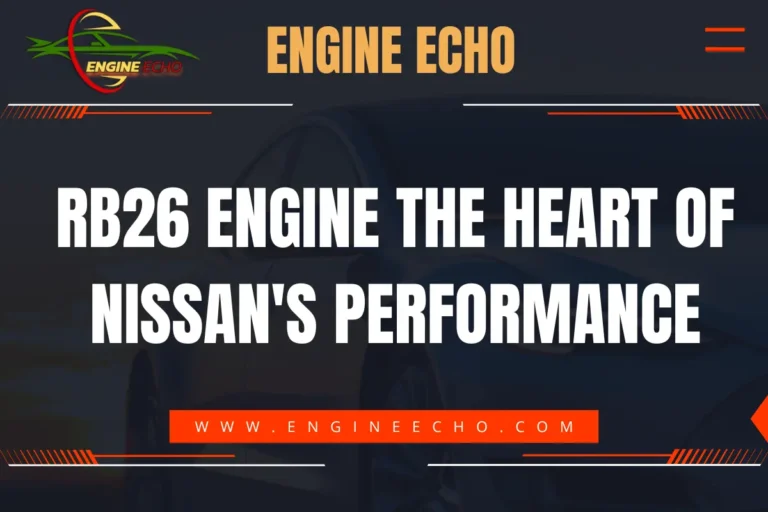Cars with No Engine: Innovative Designs

Key Takeaways
- Revolutionary Concept: Engine-less cars are reshaping the future of mobility with innovative energy sources.
- Technological Advances: From electric motors to hydrogen fuel cells and solar power, these cars demonstrate groundbreaking progress.
- Environmental Benefits: Reduced emissions and lesser dependence on fossil fuels are key advantages of these vehicles.
- Economic Advantages: Lower maintenance costs and smoother rides make them appealing to a broad audience.
- Challenges and Opportunities: Infrastructure, initial costs, and energy storage technologies remain key areas for development.
Introduction: A Leap into the Future
Imagine a world where cars don’t rely on noisy engines or fossil fuels. Instead, they glide silently, powered by renewable energy. This isn’t just a futuristic dream—it’s the present, with engine-less cars leading the charge toward sustainable transportation. Having personally witnessed the surge of electric vehicles (EVs) and innovations in clean energy, I’m thrilled to share how these cutting-edge designs are transforming mobility.
What Defines an Engine-less Car?
Key Features
- Uses electric motors, solar panels, or hydrogen fuel cells instead of internal combustion engines.
- Prioritizes simplicity, reducing the number of moving parts and the need for regular maintenance.
- Designed for sustainability, with zero or minimal emissions and enhanced energy efficiency.
Engine-less cars stand as symbols of innovation, moving beyond traditional mechanics to prioritize eco-friendly and efficient transportation solutions.
How Engine-less Cars Differ from Traditional Vehicles
Power Source
- Traditional Cars: Depend on fossil fuels, leading to greenhouse gas emissions.
- Engine-less Cars: Rely on renewable energy sources like electricity and hydrogen.
Maintenance
- Traditional Cars: Require frequent servicing for engine components like spark plugs and oil changes.
- Engine-less Cars: Simpler designs mean fewer repairs and reduced costs.
Environmental Impact
- Traditional Cars: Contribute significantly to air pollution and climate change.
- Engine-less Cars: Produce zero tailpipe emissions, a win for the environment.
Types of Engine-less Cars
Electric Vehicles (EVs)
Electric vehicles are the frontrunners in the engine-less revolution. With silent motors and instant torque, EVs deliver an unmatched driving experience.
Examples:
- Tesla Model S: Combines luxury with outstanding performance.
- Nissan Leaf: Affordable and practical for everyday use.
Solar-Powered Cars
Harnessing the sun’s energy, these vehicles represent a step toward self-sustaining mobility.
Examples:
- Lightyear One: Can travel up to 450 miles solely on solar power.
- Sono Motors Sion: A practical hybrid integrating solar panels for energy efficiency.
Hydrogen Fuel Cell Vehicles
Using hydrogen to generate electricity, these cars only emit water vapor, making them incredibly clean.
Examples:
- Toyota Mirai: Offers a seamless driving experience with zero emissions.
- Hyundai Nexo: A tech-savvy hydrogen car with impressive range.
Magnetic Levitation (Maglev) Vehicles
Still in conceptual stages, these vehicles use magnetic fields for frictionless propulsion, promising ultra-smooth and high-speed travel.
Technological Innovations in Engine-less Cars
Advanced Battery Technology
Modern battery systems are making EVs more reliable and efficient.
- Solid-State Batteries: Enhance energy density and charging speed.
- Lithium-Ion Batteries: Continue to dominate due to affordability and reliability.
Integration with Renewable Energy
Renewable energy sources such as solar and wind are seamlessly powering these vehicles.
- Solar Power: Fully solar-powered cars are still emerging but show immense potential.
- Wind Energy: Research is exploring how wind turbines could contribute to powering vehicles.
Lightweight Materials
Innovative materials like carbon fiber and graphene are reducing vehicle weight without compromising strength.
- Carbon Fiber: Offers durability and lightweight advantages.
- Graphene: Improves battery performance and structural integrity.
Benefits of Engine-less Cars
Environmental Gains
- Zero emissions contribute to cleaner air and reduced global warming.
- Lower reliance on finite fossil fuels.
Economic Advantages
- Cost-Effective: Reduced maintenance and operation costs over time.
- Incentives: Governments often provide tax credits for purchasing green vehicles.
Performance and Comfort
- Quiet Rides: Electric motors ensure noise-free driving.
- Better Acceleration: Instant torque provides quick and responsive rides.
Challenges to Overcome
Infrastructure Development
- Expanding the network of charging stations and hydrogen refueling points is essential.
- Enhancing the power grid to handle increased demand from electric vehicles.
High Initial Costs
- Advanced technology makes these cars expensive initially.
- Long-term affordability compensates through lower running costs.
Technical Limitations
- Battery Longevity: Extending battery life is a priority.
- Hydrogen Storage: Safe and efficient storage solutions are under development.
The Future of Engine-less Cars
Engine-less cars are set to transform mobility through advanced technologies like autonomous driving and integrated renewable energy systems. Companies are working on innovations that will make these vehicles more affordable and practical for everyday users.
Conclusion
Engine-less cars represent the next big step in sustainable transportation. By replacing traditional engines with innovative technologies such as electric motors, hydrogen fuel cells, and solar panels, these vehicles are paving the way for a cleaner, more efficient future. They promise not only environmental benefits but also economic and performance advantages for drivers. Despite challenges such as infrastructure needs and high initial costs, the ongoing advancements in energy storage and renewable integration are set to overcome these hurdles. As we look to the future, engine-less cars are more than a technological trend—they’re a shift toward a better and more sustainable world.
Frequently Asked Questions (FAQs)
What defines an engine-less car?
An engine-less car operates without an internal combustion engine, relying on electric motors, solar panels, or hydrogen fuel cells instead.
Are engine-less cars entirely emission-free?
Most engine-less cars, like EVs, have zero tailpipe emissions, but the production of energy sources (like electricity) may involve emissions.
How do hydrogen fuel cell vehicles work?
Hydrogen reacts with oxygen in a fuel cell to produce electricity, with water vapor as the only byproduct.
What are the primary benefits of engine-less cars?
They offer reduced emissions, lower maintenance costs, and improved energy efficiency.
Will these vehicles replace traditional cars?
While traditional cars are still dominant, the adoption of engine-less vehicles is growing rapidly as technology improves.
Let me know if you need further edits!
Thanks for checking out this article on EngineEcho.com! Hope you found this article: "Cars with No Engine: Innovative Designs" helpful! If you liked it and want to dive into more car engine topics, head over to our homepage. There's always something new to discover in the world of engines. Enjoy your reading journey!
Check out our previous article: Cars with LS3 Engine: Performance Review






